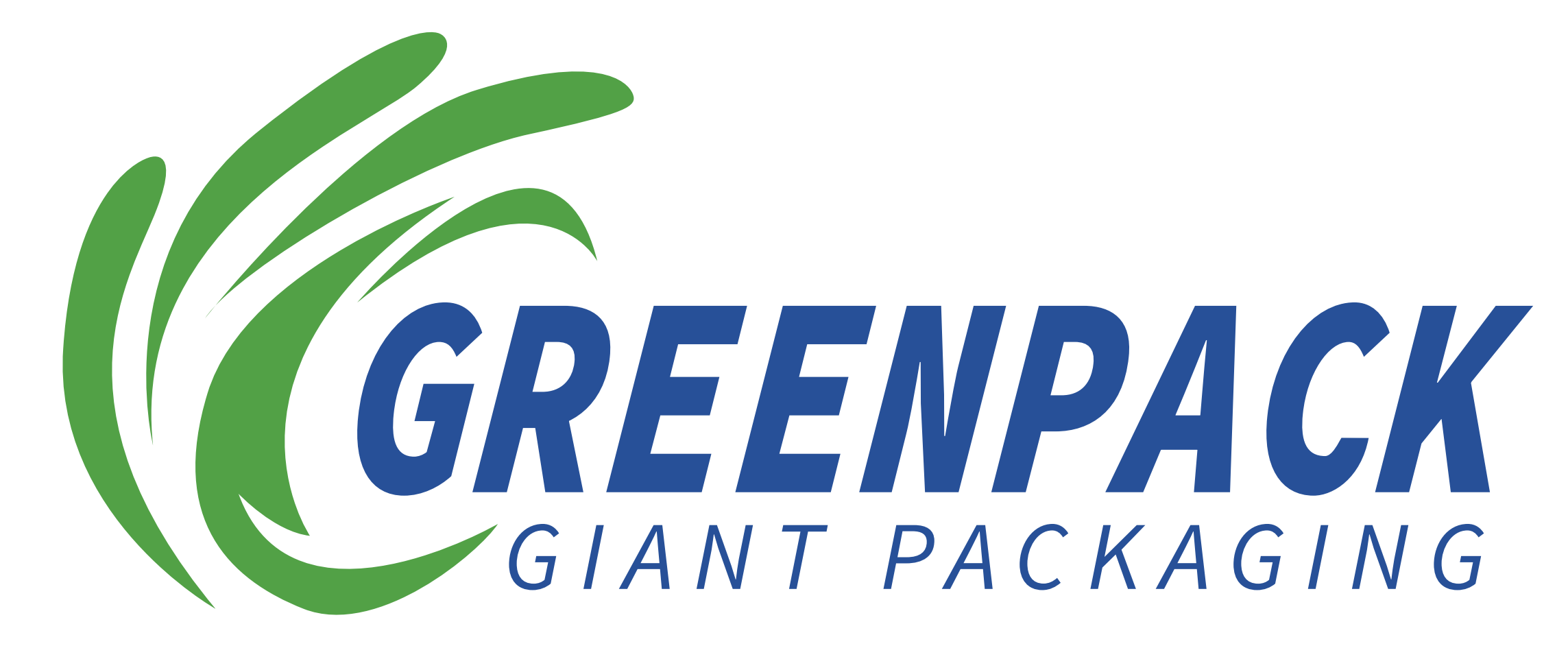Eco-Friendly Materials for Food Bag Packaging
Compostable Bioplastics: PLA and PHA Innovations
Compostable bioplastics like PLA (Polylactic Acid) and PHA (Polyhydroxyalkanoates) are heralding a new era in eco-friendly food bag packaging. These materials originate from renewable resources, such as corn and sugarcane, making them a sustainable alternative to conventional plastics. According to a study, PLA and PHA can decompose in industrial composting facilities within 45 to 90 days, a stark contrast to traditional plastics that can take centuries to degrade. Their application in food packaging not only ensures the preservation of product freshness but also significantly reduces environmental impact, representing a pivotal shift in sustainable packaging solutions.
Plant-Based Alternatives: Sugarcane Bagasse and Seaweed
Sugarcane bagasse and seaweed are exemplary plant-based alternatives revolutionizing food packaging. Sugarcane bagasse, a by-product of sugar production, is a robust and sustainable material increasingly used in manufacturing food bags. Its production is efficient, with low environmental impact, making it a prime choice for eco-conscious consumers. Meanwhile, seaweed-based packaging offers a biodegradable solution with a lower environmental footprint than conventional plastics. Companies like Notpla are successfully utilizing these materials, showcasing their viability and reinforcing the growing acceptance of plant-based solutions in the food packaging industry.
Recycled Content Solutions for Circular Economy
Recycled content materials are at the forefront of strategies to foster a circular economy in food packaging. These materials involve reclaiming used products and turning them into new packaging, a process that greatly reduces waste. Our industry data reveals that incorporating recycled materials could potentially lead to up to a 30% reduction in waste generated by packaging alone. Successful brands like Loop have embraced recycled content bags, experiencing increased consumer acceptance and loyalty, which underscores the potential for sustainable packaging solutions to drive both environmental and business benefits.
Food Bag Applications Across Industries
Snack Bags: Replacing Plastic with Sustainable Options
The switch from traditional plastic snack bags to sustainable options has become a significant trend in the packaging industry. Sustainable materials, such as biodegradable films and compostable laminates, are being utilized to create snack bags that are kinder to the environment. Research indicates that these options not only reduce plastic pollution but also appeal to eco-conscious consumers who value sustainable packaging solutions. Brands like Lays and Kettle have pioneered using biodegradable snack bags, positively impacting brand perception and customer loyalty. Such changes are increasingly required as consumers demand more eco-friendly snack packaging solutions in the marketplace.
Pet Food Packaging: Biodegradable Dog Food Bags
The demand for sustainable pet food packaging, specifically biodegradable dog food bags, is on the rise. Consumers are becoming increasingly concerned about the environmental impact of traditional pet food packaging and are seeking eco-friendly alternatives. Materials like compostable laminates and paper offer significant advantages in reducing waste, aligning with the needs of eco-conscious pet owners. Statistics show a growing preference for sustainable pet products, as highlighted by the increasing market share of brands that have adopted biodegradable packaging. This trend reflects the broader movement towards sustainability across various consumer product sectors.
Vacuum Seals for Extended Freshness
Integrating vacuum sealing technology into eco-friendly packaging solutions offers both sustainability and freshness preservation benefits. Eco-friendly vacuum bags are proving effective at not only maintaining the freshness of food products but also reducing food waste. Scientific research supports the use of vacuum sealing for extending the shelf life of food items, which is crucial in minimizing wastage and enhancing sustainability efforts. These solutions demonstrate that it is possible to maintain high standards of food preservation while committing to environmentally responsible packaging practices.
Overcoming Implementation Challenges
Cost-Effective Scaling of Production
Making eco-friendly food packaging more cost-effective involves tackling the current production barriers and creatively scaling production. Eco-friendly materials often come with higher initial costs, but economies of scale can be achieved through strategic collaboration. By joining forces, businesses can produce in bulk, significantly lowering the per-unit cost. A successful case study is the partnership between Mondelez and Saica Group, who innovated cost-effective, paper-based packaging for chocolate and confectionery markets. Their approach demonstrates the financial viability of sustainable practices when companies pool resources effectively.
Infrastructure for Composting and Recycling
The current recycling and composting infrastructure is deficient, thereby discouraging the widespread adoption of eco-friendly packaging. This challenge is amplified by inconsistent regulation and limited facilities to handle compostable materials, which is evident from the estimated 50% inadequacy in available infrastructure worldwide. Experts suggest enhancing facilities and implementing uniform standards across regions to alleviate these issues. Improving infrastructures can significantly uplift community capabilities, as reliable systems would enable better waste management, particularly for biodegradable and recyclable materials.
Consumer Education on Proper Disposal
The key to effective eco-friendly packaging use lies in educating consumers about proper disposal methods. Many consumers lack awareness of how to handle biodegradable and compostable packaging, as highlighted by surveys indicating significant knowledge gaps. To rectify this, businesses could launch educational campaigns that guide consumers on disposal methods, emphasizing sustainability. Campaigns can utilize engaging content like videos, infographics, and live demonstrations to equip consumers with the necessary knowledge to support the eco-friendly movement actively.
Future Trends in Sustainable Food Packaging
Smart Custom Food Packaging Integration
The integration of smart technology into food packaging is not only innovative but also transformative for the industry. Smart packaging solutions, such as freshness indicators and tracking systems, help in reducing food waste by alerting consumers when products are nearing spoilage. This kind of packaging enhances supply chain efficiency by ensuring products are properly monitored from production to consumption. For instance, some companies have developed custom food packaging solutions using RFID tags and QR codes that provide real-time updates on a product's status. These innovations are paving the way for more sustainable practices by ensuring that every package is both a reservoir of information and a guardian of freshness.
Edible Coatings for Zero-Waste Solutions
The introduction of edible coatings in food packaging marks a revolutionary step towards zero-waste solutions. These coatings are designed to be consumed along with the food product, significantly reducing packaging waste and enhancing sustainability. Their formulation often includes natural ingredients such as proteins, lipids, and polysaccharides, making them safe for consumption. Edible coatings have been effectively applied to a range of food items, including fruits, vegetables, and bakery products, helping extend shelf life and maintain freshness. Studies indicate growing consumer acceptance of these solutions, which promise a future where packaging waste could become a concept of the past.
Regulatory Shifts Driving Industry Adoption
Recent regulatory changes are significantly driving the adoption of sustainable packaging practices within the food industry. These regulations focus on reducing the environmental impact of packaging materials, thus compelling businesses to innovate and comply. For instance, the European Union's ban on single-use plastics and the promotion of recyclable packaging by 2030 are pushing companies towards more eco-friendly solutions. Businesses can adapt by investing in research and developing packages that meet these emerging standards. Looking ahead, it's predicted that regulatory frameworks will continue to tighten, making sustainability not just an option but a necessity in the global food packaging landscape.
FAQs
What are compostable bioplastics like PLA and PHA?
Compostable bioplastics such as PLA (Polylactic Acid) and PHA (Polyhydroxyalkanoates) are derived from renewable resources like corn and sugarcane. They decompose faster than traditional plastics, especially in industrial composting facilities.
How are plant-based alternatives like sugarcane bagasse used in packaging?
Sugarcane bagasse, a by-product of sugar production, is utilized in making robust, sustainable food bags with a low environmental footprint. It's an effective option for eco-conscious consumers.
What role does recycled content play in eco-friendly packaging?
Recycled content solutions reduce waste by reclaiming and reusing materials in new packaging, contributing significantly to a circular economy. Embracing recycled bags can notably decrease waste generation.
Why is consumer education important for eco-friendly packaging?
Educating consumers about proper disposal methods for biodegradable and compostable packaging is crucial to maximizing their environmental impact. This ensures consumers can effectively support sustainable practices.


